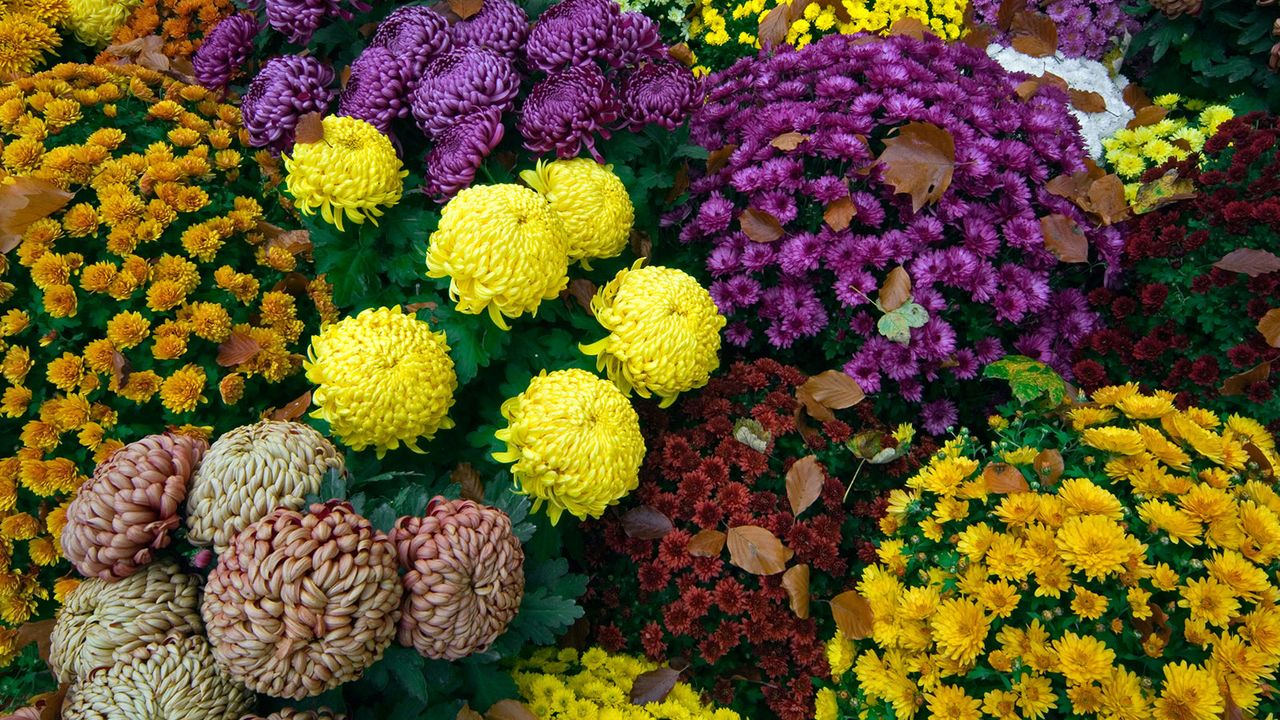
Chrysanthemums, or 'mums', are quite the controversial topic amongst flower growers, gardeners, and florists. The seventies 'chrysanth' is often thought of as a fairly ugly, prissy thing, with static, unmoving petals in garish hues. But, the tide is changing, as well as there being many delightful, new dahlia-like varieties of 'mums' which are becoming increasingly trendy.
Although fairly ubiquitous flowers, growing mums isn't necessarily straightforward. If you're wondering how to grow chrysanthemums successfully, maybe for late-season cut flowers (they can last over a month in a vase) or simply for some neat pompom bursts of intense color, then you need to be aware that there are some common mistakes you should avoid.
So, if you're heart is set on growing these blooms, it's worth taking heed of these six chrysanthemum mistakes before you set out, or, if you are already growing mum's and finding it an uphill battle, you may just recognize one of these pitfalls and turn your mum growing mishaps into a masterpiece.
1. Misidentifying the variety you're growing
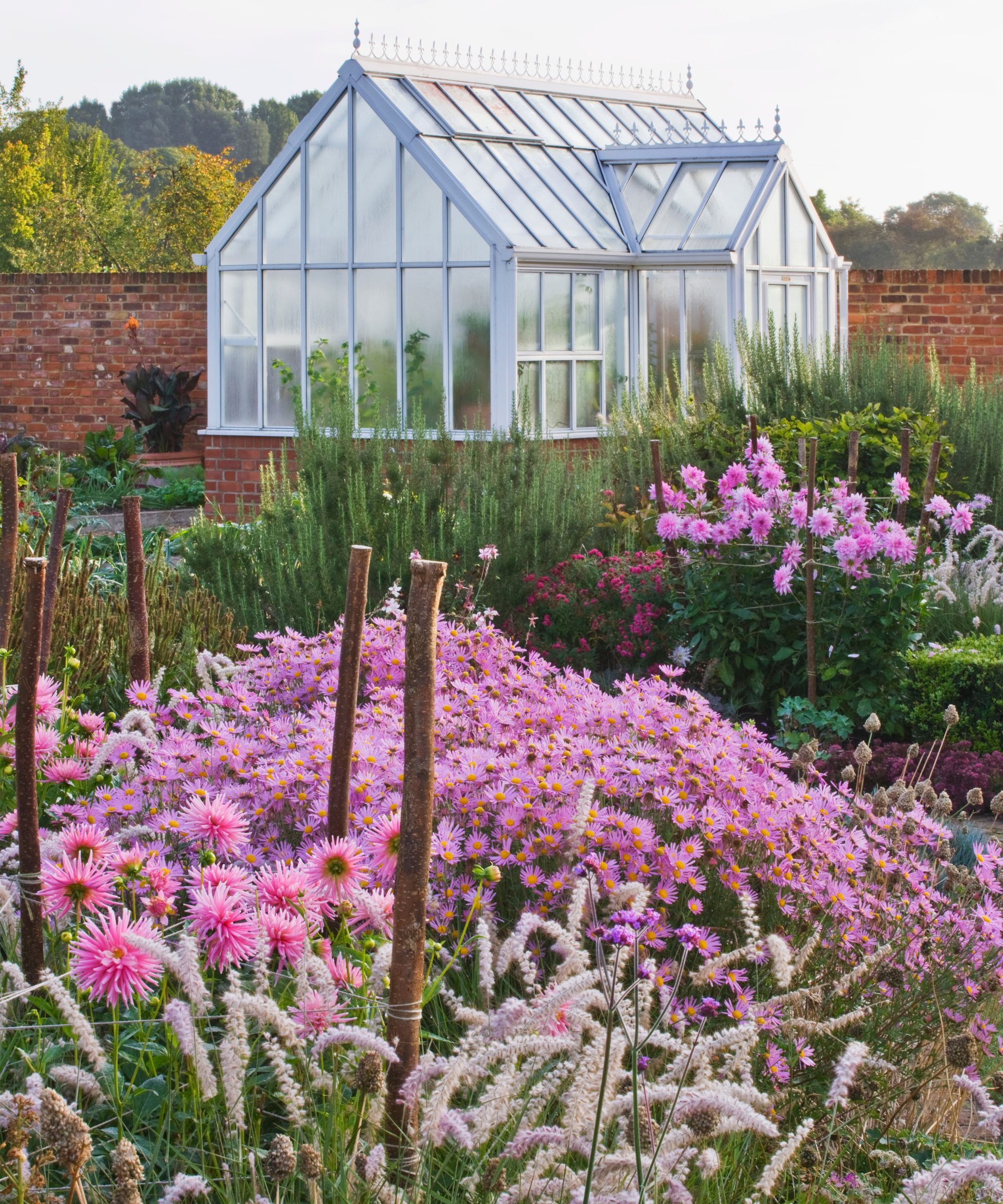
The first thing you should consider when growing mums is the variety that you are growing and its specific needs.
There are perennial garden chrysanthemums and perennial cut flower chrysanthemums, which will return year after year if they are overwintered inside. These are perfect for a cut flower garden or to grow in pots once the summer dwindles and your summer pot is over.
There are annual chrysanthemums, which only last a single season and should be composted once they have finished for the year. These are, more often than not, found in nurseries sporting vivid colors and in shorter, bushier mounts.
Before setting out, it's worth ensuring you know which variety you are growing, or wish to grow, so you can both grow them successfully and manage your expectations.
2. Over feeding your chrysanthemums

Whilst it is tempting to throw on a lashing of concentrated fertilizer on your mums to keep them happy and healthy, it's very easy to overfertilize them.
Whilst it serves as a boon to your chrysanthemums to feed in their early growing stages, once they begin to grow and bud up, you really needn't feed them anymore.
Stay away from high-nitrogen fertilizers because it promote excessive, tender leafy growth at the expense of flowers. Not only will you have fewer flowers, but you will also increase their susceptibility to frost damage.
Instead, for your 'mums' to flower prolifically, use a high potassium fertilizer like this one available at Amazon, whilst they grow in the spring.
3. Underwatering
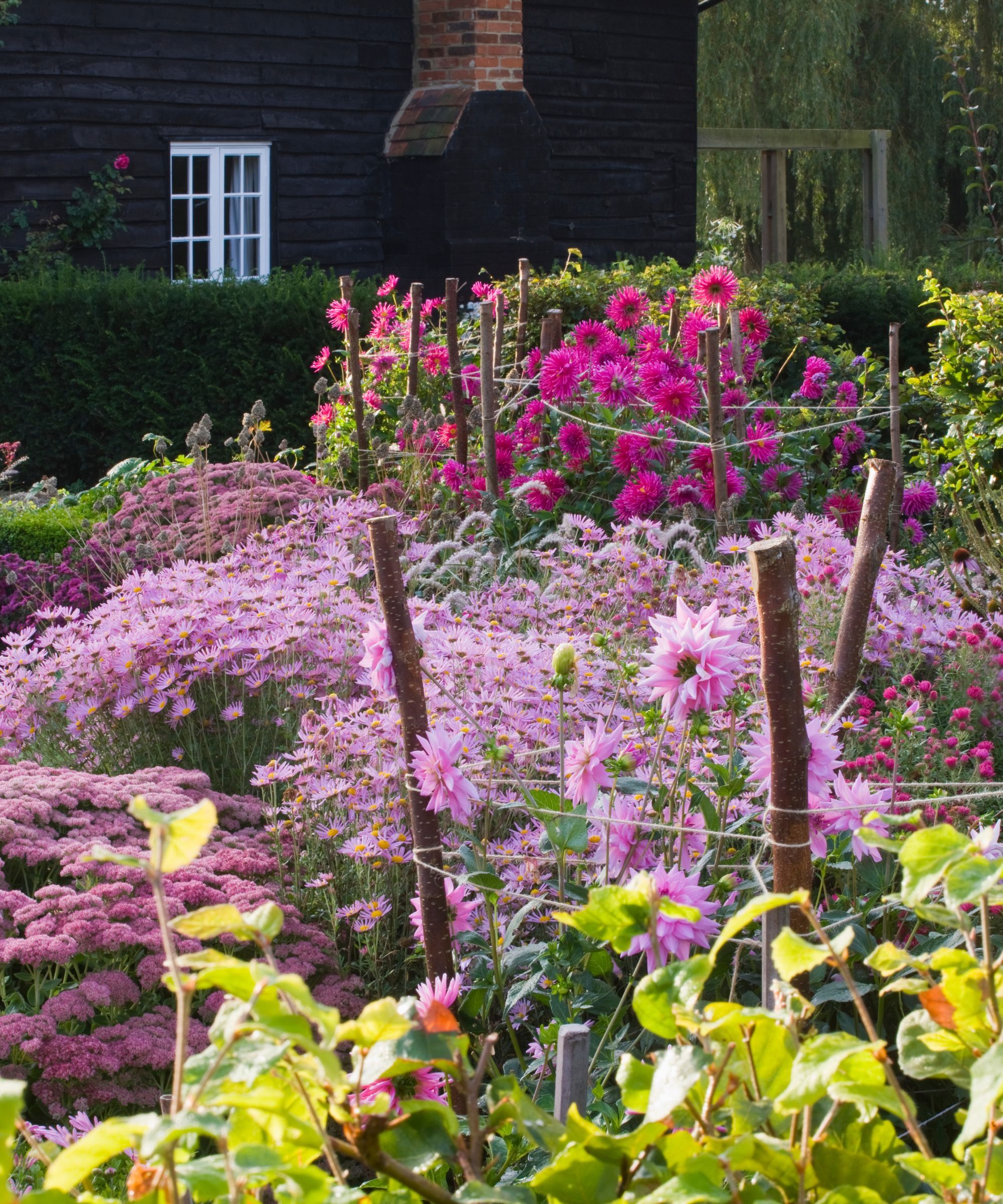
Chrysanthemums need consistent watering because of their very shallow root systems, which dry out quickly and cannot access a large water supply
Deep and regular watering is even more important if you are growing chrysanthemums in pots, since their restricted root space and limited soil volume mean they will very quickly dry out.
Ensure the soil never dries out fully and water every day in warm weather, reducing to weekly watering once the weather cools.
3. Forgetting to pinch out your plants
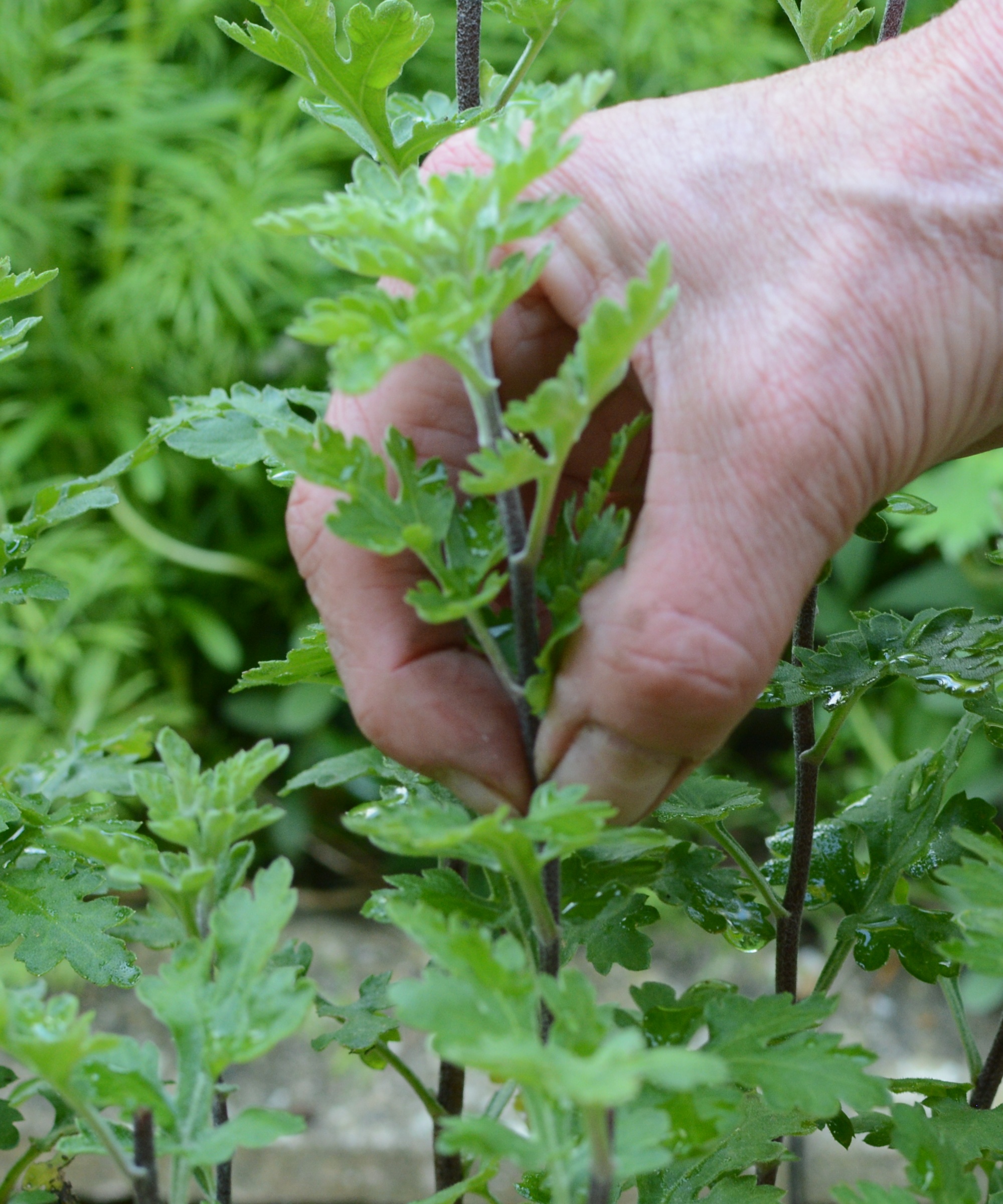
Pinching out your young chrysanthemums is the main key to prolific blooms that don't grow too leggy and spindly.
The idea is to remove the growing tip so the plant is encouraged to send out new side shoots. The more side shoots the plant produces, the more flowers it will produce.
Your 'mums' should be pinched when they are young to encourage them to develop a more bushy growing habit. Forgetting to do this is one of the most common chrysanthemum growing mistakes that leaves your chrysanthemum plants tall, scraggly, and lacking in flowers.
4. Planting mums in pots without adequate drainage
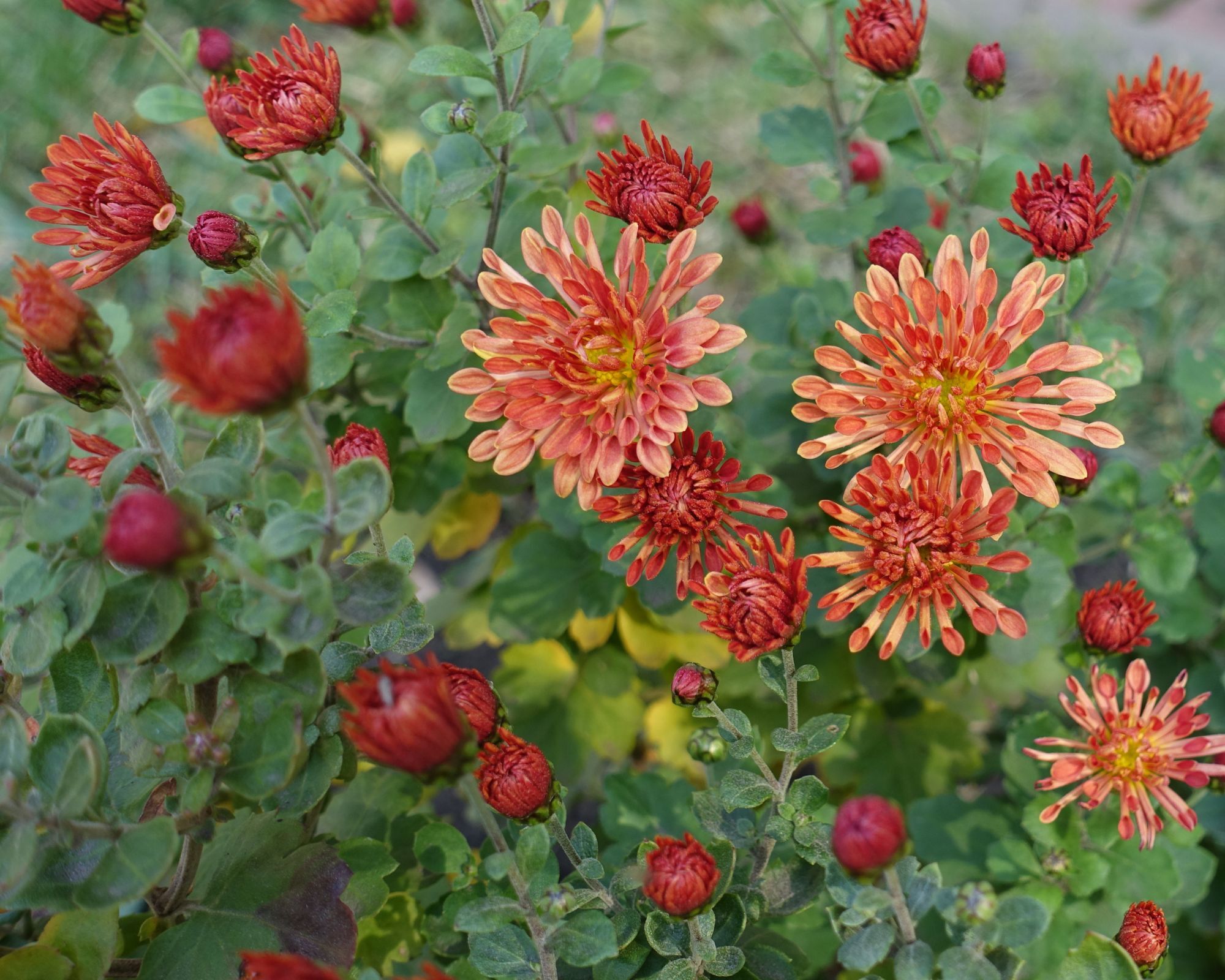
When you bring your plant home and add it to the flower bed or house it in a pot, its important to think about good drainage.
Although, as forementioned, 'mums' are big water drinkers, they need both plenty of water and good drainage to thrive, and if they are watered heavily in an environment without adequate drainage, they will perish shockingly fast.
If you are potting up your chrysanthemums, the pot must have drainage holes at the bottom. Even if you do have drainage holes in your pot, and it is sitting flush to the ground, the water may not be able to drain well. If this is the case, it is worth getting some modestly priced pot raisers like these available at Amazon, which will lift your pots slightly from the ground, allowing water to drain.
5. Not giving them enough natural sunlight
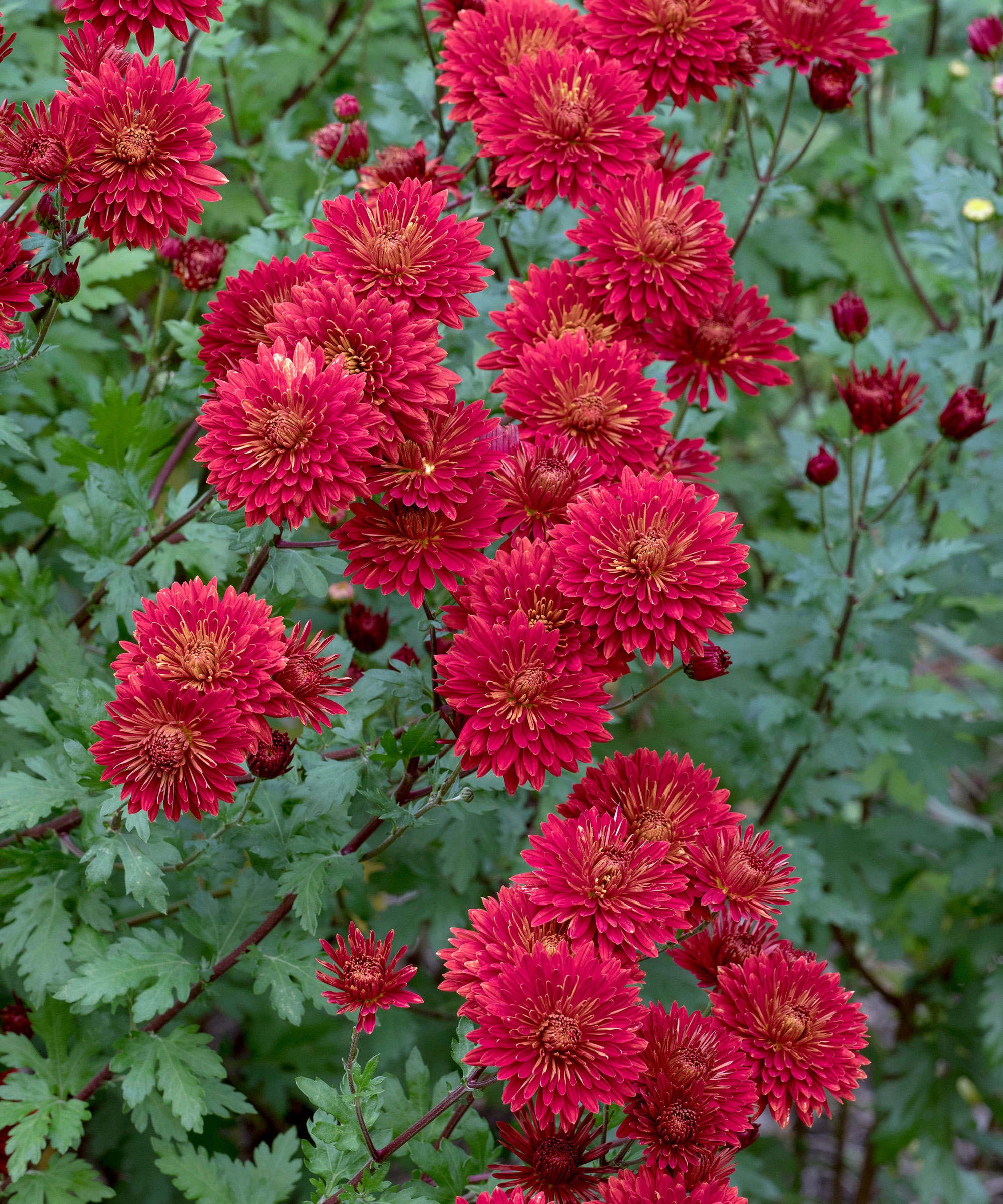
Chrysanthemums need full sun. Not partial sun or dappled shade, but full sun - at least six hours of daylight per day.
If they get less than 6 hours of sunlight or spend time in the dappled shade, they will be far weaker and their blooms far more tepid. That's why they're great for south-facing garden ideas, but if you have a garden deprived of light, you may struggle with mums, so consider planting them in a pot and moving them to a position in your home that receives the most amount of direct sunlight.
6. Forgetting to deadhead spent blooms
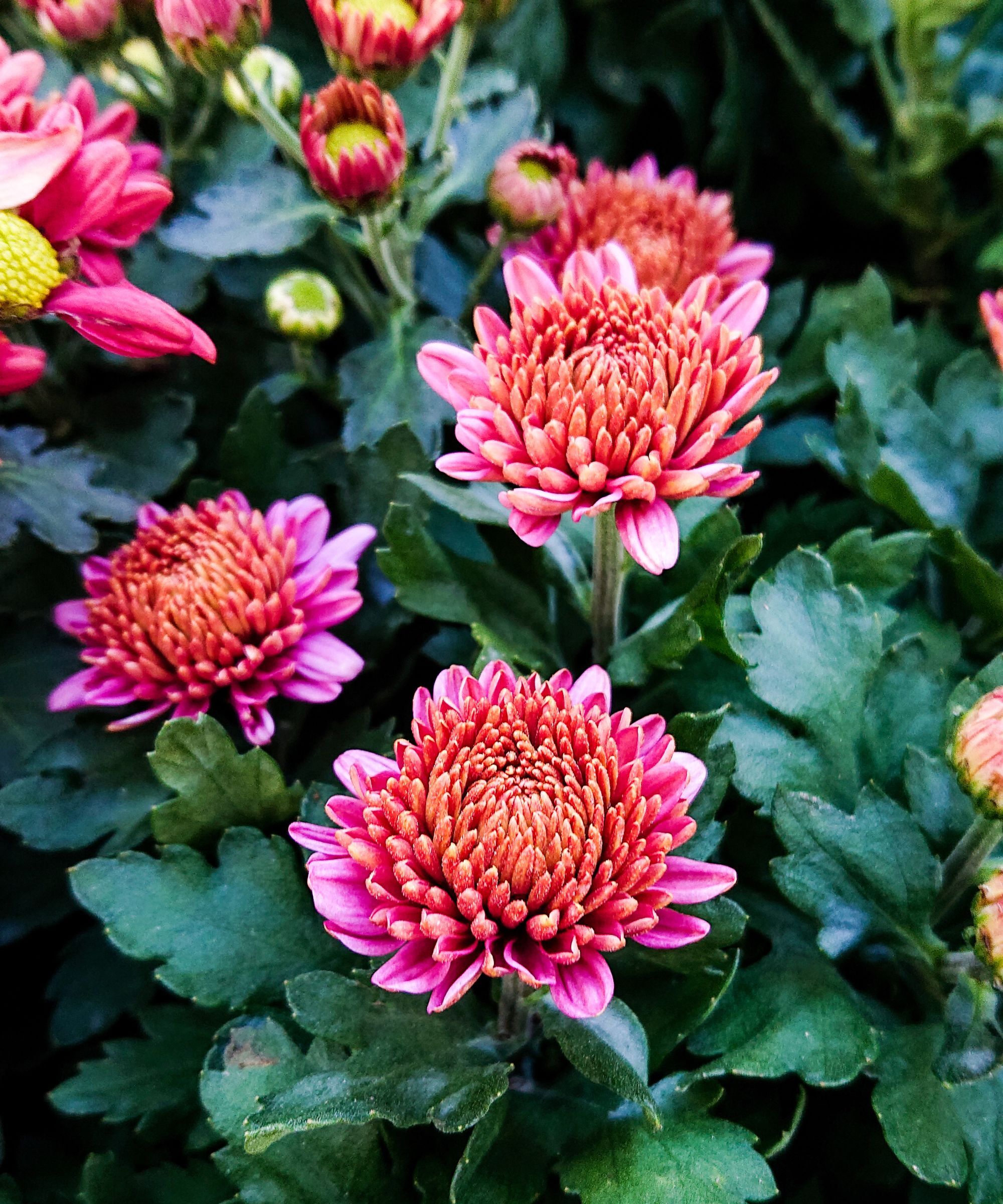
Many people don't realise that mums are fantastic cut and come again flowers, so the more you cut them for the vase, the more ebullient blooms they will produce.
As well as regularly cutting your chrysanthemums, you should also be deadheading any spent blooms as often as you can.
At the end of the summer, when the rest of the garden is brown and mushy, chrysanthemums fill up borders with color at a gallop. But if you are finding that after a few fantastic flowers, they seem to be losing their vigour, and not quite as thrilling as those first few weeks, then you need to be deadheading more often.
Deadheading will prevent the plant from making seed and encourage further blooming. The idea is to deadhead the spent flowers before the plant drops the petals and makes the seed head. Interrupting this process will prevent the message from returning to the plant that its flowering job is done.
It will throw out more flowers as a result. If you haven't already been deadheading your mums, now's the time to dust off those gardening snips and get out there.
Chrysanthemum growing essentials
A must have for making easy work of deadheading, lightweight, pocket sized snips that will deadhead the diddiest of flowers - ideal!
If you are growing perennial mums then you will need to protect them from the frost at winter time to ensure they come back next year. Either bring them indoors or use these, which will keep them toasty.
The best fertilizer for mums? Tomato fertilizer. High in potassium so it will help you grow vigorous and productive plants in a container or in the garden.
As well as mums, there are many chrysanthemum alternatives, like asters and rudbeckia, to try in your flower garden too. If you love mums and have never grown rudbeckias, let this be your sign. Starting to bloom in summer, they are one of those rare flowers that will last until December, or even later, if you treat them well.







